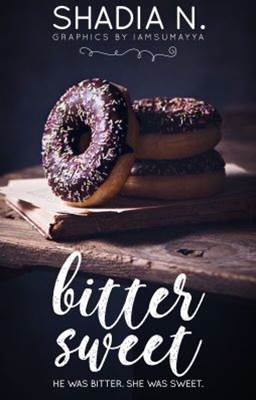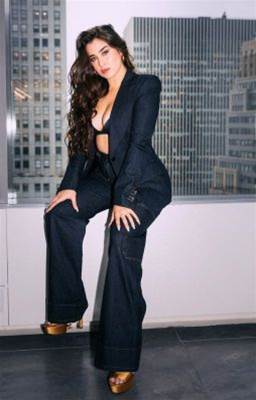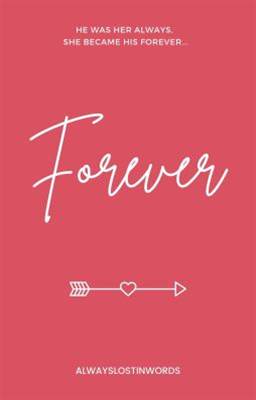《Writer Room》Realistic, Relatable and Remarkable
Advertisement
What makes a book amazing? Is it the prose? The story? The unexpected twists and turns?
Some would say all three, but in a romance — at least in my opinion — it's the characters. Romance readers want swoon-worthy love interests and relatable main characters. Plots can be thin and even cliché, but if the characters sparkle, then readers will turn the pages.
In this chapter, I'm going to answer an important question one of my readers had in an earlier installment:
How can I make characters more realistic and relatable?
This is probably one of the harder things to do in fiction. Crafting a character that feels real is difficult. We've all read books that have interesting plots and excellent prose but for some reason, the story feels flat. Usually this is because the characters aren't relatable or realistic — they're cardboard cutouts, interchangeable, boring.
Let me walk you through my process of creating characters. I'm a pretty literal person, so I rely on some very concrete methods to create characters. Other authors wing it and allow the character to reveal themselves as they write.
(I need to stress that neither approach is wrong. You do you).
When writing a romance, I create the hero first. (I'm going to use the terms hero and herone from here on out for sake of ease, because I write straight, cis characters. Feel free to insert your own characters and pairings).
Creating the hero is the most fun because this involves going to Instagram and looking at photos of Michele Morrone. Kidding! Sort of.
Seriously, I do tend to rely on visual cues when creating the main male character. My books are heavy on sex and sensuality, and the hero's stunning good looks factor into how the heroine reacts to him. So I like to have an image in my mind when I begin. From there I decide on a name, age and a profession.
Advertisement
Then I begin thinking about the heroine. How old is she? What year was she born? Those things influence her name (I discuss this more in detail in an earlier chapter). Sometimes I look for photos of women to help with this, but often not. I usually want the heroine to be a little more nebulous and generic physically, because of a couple of reasons:
1. I want the reader to be able to imagine herself as the heroine
2. I want the hero to be attracted to her for more than the physical, but I also want their interactions realistic. So when he first sees her and lusts after her, he's thinking purely along the lines of carnal needs. But soon after, she's something MORE than just a sexy person. She's hilarious, smart, talented, competent, SOMETHING other than just a piece of ass.
Anyway. Once I have an idea of their names, professions, ages and general physical characteristics, I begin thinking about conflict. This is where things get exciting, and where the real plotting begins.
What are the character's motivations? What are the power differences between the two people? Why should they not be together? The more detailed you can be in answering these questions, the more realistic your characters will be.
Sometimes it helps to think of a VERY obvious conflict, and insert your characters into a scenario. In many cases, the more simple the conflict and motivations, the better. Let's look at my book TELL ME A STORY as an example. This is told only in the heroine's point of view, so I had to make her character more layered and realistic because we are in her head all the time.
The heroine, Emma, is a bookstore owner. She's kind of scraping by, happy with her life but also worried because her bookstore's building is being sold. She's also kind of lonely and she goes to a literary event and meets a hot guy. They have an instant connection, and he pursues her.
Advertisement
This is not the end, of course. Think of Emma like an onion (lol) and we are unpeeling her layers. As it turns out, Emma grew up poor. The new man, Caleb, is super wealthy. She's a vegetarian, he's a meat eater. She lives in an old bungalow, he lives in a new high rise. She's a small business owner who had no help from anyone, he took over his family's construction and property development company.
Are you starting to see the layers? There are more. I wanted Emma to feel real, so I added several details to her character and life. She has a cat named Higgins. A best friend who is a lesbian. She knits sweaters for her best friend's pitbull. She loves oatmeal cookies, vintage clothing, and writing erotica. She refuses to listen to advice and doesn't want to rely on a man for anything but sexual pleasure.
Now, TELL ME A STORY was initially a 20,000 word novella, and the three previous paragraphs were all things I thought of before I started writing that novella. As the serial expanded, so did my details of Emma.
Most importantly in that novella, Emma's motivation was NOT to find love or a man. It was to save her bookstore from closing. Her motivation dovetailed with the novella's main conflict: that Caleb the sexy developer man was buying the bookstore building and wanted to turn it into condos.
I personally think it's super important to give your main character a motivation other than love. This helps your character be realistic and well-rounded.
Here are some other ways to make your character more realistic:
- I know some authors use astrological charts, tarot cards or personality tests as guides for character traits. This is an interesting way of sparking ideas and I keep meaning to do this with my next book!
- Make sure your character has a backstory — but don't put all that backstory on the page. It's helpful for YOU to know your character's early struggles, triumphs and experiences. Most of the time, you can leave that out of the actual book, however, because a lot of backstory is boring and will make the reader fall asleep. Or, save those details for bonus chapters or a special treat for your readers.
- Think about people you know in real life. REALLY think about them. What are the traits you love? What are the traits that annoy you? Even in people you adore, they have weird habits and occasionally frustrating traits. Make a list of all the traits of someone you know well, and incorporate those into a character (be cautious about modeling a character exactly after a real person, but pick and choose dominant traits). Perhaps they have a quick temper, but are incredibly kind to children and animals. Or they like to solve everyone's problems, but they also talk so fast that no one can understand them. Everyone is unique, and the more unique the traits, the more people will love your character.
- People have quirks, idiosyncrasies and mannerisms. No one is all good, or all bad. Make the good characters sympathetic at times, or at least allow them a pleasant trait or two.
A word about female heroines. We often want to create perfect female characters, women and girls who are beautiful but don't know it, who are smart but don't brag about their accomplishments, who are kickass and kind, flawless in every way.
No one is perfect. Give your heroine flaws. It's okay for female characters — and actual human females — to be difficult, ambitious, messy.
Feel free to discuss or ask questions in the comments!
Until next week, I'll be drinking coffee and talking about plots with the local roosters.
xoxo
Tamara
Advertisement
- In Serial81 Chapters

Hands Held in the Snow
Aspiring priest Beatrice dreams of saving the world. Delinquent debutante Emi dreads her looming engagement to a distant noblewoman. A chance meeting in a library ignites a flame of love in their hearts. But, as the pair explore the wintery city of Balarand and each other, they must contend with their relationship’s uncertain future. Only by walking together hand-in-hand can they face these obstacles for the sake of their futures. Hands Held in the Snow is an LGBT+ fantasy romance about a bookworm and a brat at the cusp of adulthood. Read all 70 chapters today. -- Featuring artwork by Mikayla Buan. https://twitter.com/mikayla_buan You can also read Hands Held in the Snow on its official website: http://handsheld.quinlancircle.com/ And follow Hands Held on Twitter: https://twitter.com/hands_held Please vote on Top Web Fiction! You can vote once a week on each device for this story (and any others you enjoy!).
8 249 - In Serial77 Chapters

Bitter Sweet | ✔
He craved the sweetness of her touch, crazed in a frenzy for a woman too pure for his bitter life.* * * *Tasneem was a natural artist. She could create masterpieces with anything whether it be makeup, paints, or cooking. Her tuition bills are becoming too hard for her family to handle and their café isn't as popular as it was before. Until one day, the ruthless CEO of Tarkan Industries walks in and completely changes everything.Two personalities that constantly clash and a tragic past leave Tasneem more eager to unravel the mysteries behind the cold CEO. Perhaps, she might finally be the one to bring peace to his bitter soul with only the recipe of sweetness.(Book Two in the American Muslimah Trilogy, but can be read as a stand alone)•Cover by @IamSumayya•[Featured by Wattpad][Highest ranking: #1 in Spiritual]
8 89 - In Serial31 Chapters

Malia&Khari
Khari Valentine is a basketball player from New Orleans, Louisiana who seems to be very rough around the edges. His move to Washington, DC to play college ball for Georgetown University is less than smooth. He meets a very well rounded young lady in Malia King. She's smart, beautiful, spiritual, and patient. Can they build a friendship or would the two think that they have nothing in common?
8 94 - In Serial26 Chapters

Catch me if you can
Camila's a beat cop when she meets Lauren Jauregui - daughter of infamous gang boss Mike Jauregui. When a chance encounter sparks years of petty arguing and arrest attempts, Camila learns the world isn't as black and white as she once thought.Highest ranking #2 camren (24/07/20) #29 fifthharmony (10/11/20)
8 112 - In Serial103 Chapters

Changing The Course of Fate
The century's prodigy in music, Eliam Schneider was a successful college student. He was admired by a lot of people, has good grades, and was one of the candidates for the highest position of their batch. As he was about to retire in his home after a long day of study in the public library, he got caught in the middle of a gang fight and was stabbed. "So this is the end? I did not even get to graduate..." he thought."I don't think I can take it" Someone suddenly said. Eliam's consciousness looked for the source of the sobbing voice."It hurts to see him getting married to another woman" What the fuck is wrong with this guy?"HEY, I'M IN A DIRE SITUATION RIGHT NOW, AND I THINK I'M ABOUT TO DIE! CAN YOU AT LEAST KEEP YOUR LOVE AFFAIRS TO YOURSELF?" Eliam angrily said. The sobbing continued until the voice faded into nothing."Perhaps... do you want to continue living on?" The faint voice asked him"OF COURSE I DO, I STILL HAVE TONS OF THINGS I WANNA DO!" He saidThe sobbing voice became gentle and it laughed at him lightly"Alright then, you can take over my body," the gentle voice said"Huh? what do you mean take over?""Live life to the fullest for me, that's what I failed to do," the gentle voice said before completely fading into nothing.---An original novel by the author himself--- Highest Tag RankingsRank 1 in #BoyxboyRank 1 in #BLRank 1 in #VillainRank 1 in #IsekaiRank 1 in #ReincarnationRank 1 in #BXBRank 1 in #PrinceRank 1 in #RecklessRank 1 in #DevelopmentRank 1 in #BookRank 1 in #MusicRank 1 in #MagicRank 1 in #HistoricalRank 1 in #NovelRank 1 in #ComedyRank 1 in #TragedyRank 1 in #VampireRank 1 in #Original
8 157 - In Serial59 Chapters

Forever | ✓
#11 in Romance - 15.02.2020...Sequel to Always. Love's a fool. That was something Serena had learnt a long time ago, after spending her childhood in love with the boy next door. He never looked at her, the way she looked at him, yet she continued to hold him in her heart. Not matter how many times he unknowingly broke it. She continued to pick up and fix the pieces, only for it to break once more. Now years later, she was about to be faced with the same love again. Will the outcome be different this time? Read to find out.*contains some swearing*
8 186







 Prev Chap
Prev Chap Next Chap
Next Chap Chap List
Chap List
 Boy
Boy Girl
Girl
